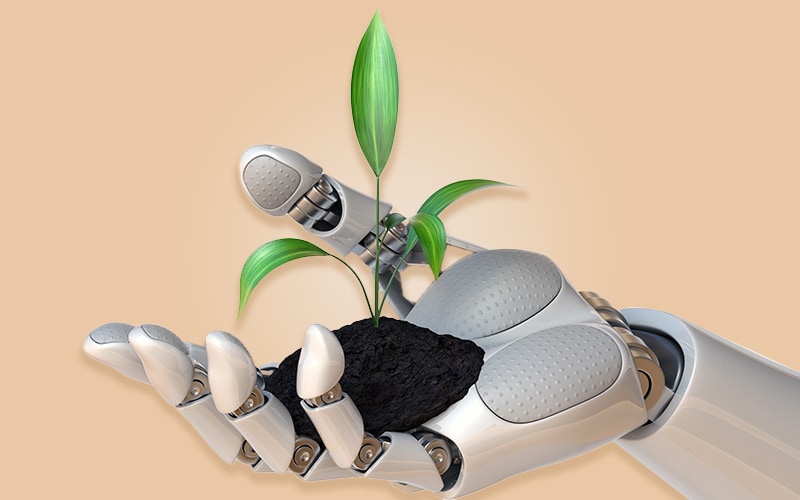COVID-19 has permanently redefined the office. A Gartner poll conducted in June 2020 showed that close to half the knowledge workers globally will continue to work remotely after the pandemic ends.1 And that will require different ways of thinking, working, and collaborating — not just laptops and reliable internet connections.
The world’s new working arrangements will place an even greater value on soft skills. These nontechnical skills, such as leadership, enable individuals to interact more effectively and get work done — two critical issues when teams are scattered geographically and in some cases have never met face to face. Soft skills positively affect culture, mindsets, attitudes, and behaviors, which help enterprises define and solve problems.2
The World Economic Forum (WEF) identified seven clusters of broad skills needed for the workplace of tomorrow, including soft skills.3 WEF’s top soft skills are creativity, problem-solving, critical thinking, people management, coordination, emotional intelligence, service orientation, negotiation, cognitive flexibility, and judgment and decision making.
Business leaders are increasingly aware that their employees need a full complement of soft skills in order to be effective in their roles. The case study below looks at how the enterprise software firm SAP uses its Academy for Engineering to cultivate soft skills among its employees. Ferose VR, senior vice president and head of the Academy, shared his experiences in developing soft skills.
SAP Academy for Engineering
Started in April 2019, the SAP Academy’s objective is to empower its 30,000 global engineering workers to be future ready. The training prepares them to think broadly, deeply, and critically.4
The five Cs that the Academy defines as its core values are courage to ask questions and take calculated risks; curiosity with a focus on intrinsic motivation and first-principles thinking; compassionate communication with a focus on maintaining empathy when having difficult conversations; community with a focus on giving; and craftsmanship in building software (Figure 1).
Figure 1. The five Cs – values at SAP Academy for Engineering
Source: SAP Academy for Engineering
The Academy runs flagship programs for three groups of employees: the Multi-Dimensional Engineering Program, the Multi-Dimensional Manager Growth Program, and the Global Architecture Workshop. However, the Academy places a different emphasis in core values among the three programs: craftsmanship for engineers, empathy for managers, and a curiosity for problem-solving for architects. All programs are bound together by foundational principles of learning by doing, solving real customer problems, and promoting diversity.
Hard and soft skills
Hard skills, such as programming, have always been the easiest to teach and measure. Workers can learn independently through books, videos, and a growing number of digital tools. All those factors encourage companies to introduce and expand training programs for these kinds of technical skills.
Soft skills, however, present a series of challenges that often discourage employers. These skills — initially identified by the U.S. military in the late 1960s — are more difficult to teach and even harder to measure. And it takes longer to demonstrate that the training was successful.
When the SAP Academy needed to decide whether to teach hard skills, soft skills, or both, management decided to make soft skills its primary focus. Executives determined that soft skills were a differentiator for engineers; SAP’s rigorous selection process ensured that its engineers were already technically proficient.
In the technology world, soft skills have been mainly used as a synonym for communication, particularly when globalization was accelerating. Professionals were trained to better communicate with customers and with colleagues in different countries.
Today, communication is an integral aspect of work life, with a large variety of tools available for translation and communication. The focus has since shifted to empathy and compassion toward colleagues and the broader society. There is an alternating shift in focus on hard and soft skills — hard skills when specific new technologies emerge and back to soft skills when the technologies mature.
Training in soft skills
Often, soft skills training and demonstrations of those skills are associated only with leaders. The general perception is that soft skills are hard to build, so they are expected only from a few. But the SAP Academy took a contrarian view. They concluded that the larger the organization, the more widely soft skills should be taught because they drive interaction and cultural change. Attitude is a term loosely used to mean soft skills; however, not much research has been conducted on this topic.
“If you look at successful large organizations and teams, I would say that soft skills have played a more important role than hard skills,” said Ferose VR of SAP Academy. “When people describe great teams, they say, ‘This is a team with a lot of character,’ not ‘This is a team with a lot of skills.’”
At the SAP Academy, grit is considered one of the most important soft skills and a key trait of its employees. Management used U.S. psychologist and author Angela Duckworth’s study of grit as a predictor of success to guide the SAP Academy. In her 20-year study of schoolchildren, Duckworth found that it was not talent, education, or family background that determined the success of people’s careers. It was grit, a combination of passion in one’s area of interest, and perseverance with that passion over a long period.
The Academy’s leadership believes that people are not necessarily born with these soft skills but can learn them. However, to excel, their training must be followed by extensive practice, just like for any other skill.
However, measuring those benefits often presents problems. Training programs for managers usually fail to meet their objectives because the organizers typically measure the wrong things. The effectiveness of soft skills training is usually based on immediate feedback. Participants are asked if the class helped them and to provide a rating for the likeability of the trainer. If the scores are high, the organizing team is happy. But that does not measure the long-term impact on the managers who were trained.
The Academy instead measures the effects of manager behaviors on the culture of their teams along the dimensions of empathy and leadership. While team members give periodic feedback on the effect of empathy, five trusted individuals who know the manager well also note changes in leadership behaviors. The results are compiled into a six-month growth report for each manager.
For engineers, the Academy creates a personalized report based on extensive observation over six months. The report documents the engineer’s growth across SAP’s core values and the associated behaviors.
When measuring the impact of these kinds of trainings, organizations need to think deeply about how they select participants. Picking the best of the best is one approach, but what matters more is the program’s intent. If the goal is to shift the mindsets of young engineers, then selecting the most agile learners makes sense. If the intent is to amplify the abilities of managers, you may want to consider choosing participants in ways that maximize peer learning.
The Academy follows a range of strategies. For the engineer’s program, it selects the best and brightest young engineers in the company. For the manager’s program, cohorts are a balance of high-performing managers and ones who show potential for learning and growth but may be struggling. Typically, the programs are intended for engineers and managers who have spent a few years at SAP but are still early in their careers. This ensures that new ideas, values, and approaches take hold easily and become the natural way they operate. The architect’s program is different in that it is intended for senior architects.
The duration of the programs also matters because changing behaviors can be a slow process. The Academy’s thesis is that it takes at least six months of sustained contact for behavioral change to take effect. Both its engineers’ and managers’ programs are six months long with a balance of in-person and self-organized activities.
Storytelling: The hierarchy of soft skills
Those accepted to the Academy’s flagship engineering program encounter a “skill stack,” starting with fluid intelligence and then proceeding to compassionate communication, improvisational leadership, and finally, storytelling (Figure 2). SAP considers storytelling a vital soft skill essential for future leaders at any level, but believes it cannot be taught in isolation. The ability to authentically tell a compelling story depends on the engineer’s capacity to improvise, feel for the audience, and step into the discomfort of doing something scary and new. The whole social skill stack comes into play in any act of performance.
Figure 2. The four layers of the soft skills stack
Source: SAP Academy for Engineering
To reinforce this skill stack, the engineers are exposed to shared control experiences, such as cooking, sailing, and assembling a theater company. This creates conditions for practicing teamwork under moderate- to high-stress conditions, but most importantly, it offers playfulness and fun.
In one instance, SAP hired Sujit Saraf, who runs the U.S.’s oldest Indian theater company, to put together a playful take on “Hamlet” (“Omlet”). The fully functioning theater company was created in six weeks, and then members performed for SAP employees.
The Academy creates conditions of psychological safety and then challenges its engineers to move from their comfort zone into the fear zone, learning zone, and finally, the growth zone. The impact of this is visible to even casual observers.
Dr. Ruicheng Li, Managing Director of SAP Labs China could see a change in their way of thinking during interactions with the first graduating batch and said “I have no idea what magic is playing in the U.S., but they [participants] look completely different now. Much stronger, more confident, and more willing to share. The stories themselves demonstrated again this is a great initiative.”5
Cultivating the soft skills that help develop well-rounded engineers is a long-term process. Soft skills are hard to teach and develop, and require patience. When the Academy was established, Ferose told his CEO that it would take time. Changing behaviors is a slow, intense, high-touch process focused on depth and small numbers, rather than width and large numbers. The program graduates 200 to 300 engineers each year. SAP’s global workforce has 30,000 engineers.
The biggest challenge for the Academy has not been the impact but the ability to scale up the training. Every engineer in SAP would benefit from the training in vital soft skills. At the same time, the program might lose its effectiveness if delivered without the high-touch, high-intensity connection with each cohort.
The question though is how many people need to be reached to shift culture? Research tells us that number is between 8% and 21%. So, even if they are only able to connect with a small fraction of the workforce, Ferose believes it can see a chain reaction that ripples out from the Academy.
As managers and technology enthusiasts pass through the program, their new skills and values spread out across the company. The values themselves are universal and speak to SAP’s history. In some sense, this is simply a return to the values SAP had as a smaller company. A precedent has been set.
Social movements, which Ferose has been studying for two decades, all follow this arc —a long, slow start leading to sudden organic growth. At a societal scale, change can occur in time frames ranging from two years to a decade.6 The question is whether a company is a society in miniature and if so, how long does it take to change culture? It is a question for Ferose to ponder and address along the journey.
References
- 9 Future of Work Trends Post-COVID-19, Mary Baker, June 8, 2020, Gartner.
- 4 things you need to know about soft skills, Meredith Somers, Feb. 6, 2018, MIT Sloan School of Management blog.
- Jobs of tomorrow. Mapping Opportunity in the New Economy, January 2020, World Economic Forum.
- SAP Academy for Engineering.
- First employees graduate from SAP Academy for Engineering, Lori Fraser, Lyana Roslan, and Paul Baur, May 14, 2020, SAP Blog.
- Antanas Mockus: The Prohibition of Fireworks in Bogotá, Inessa Lurye, Oct. 10, 2019, Harvard Kennedy School.







